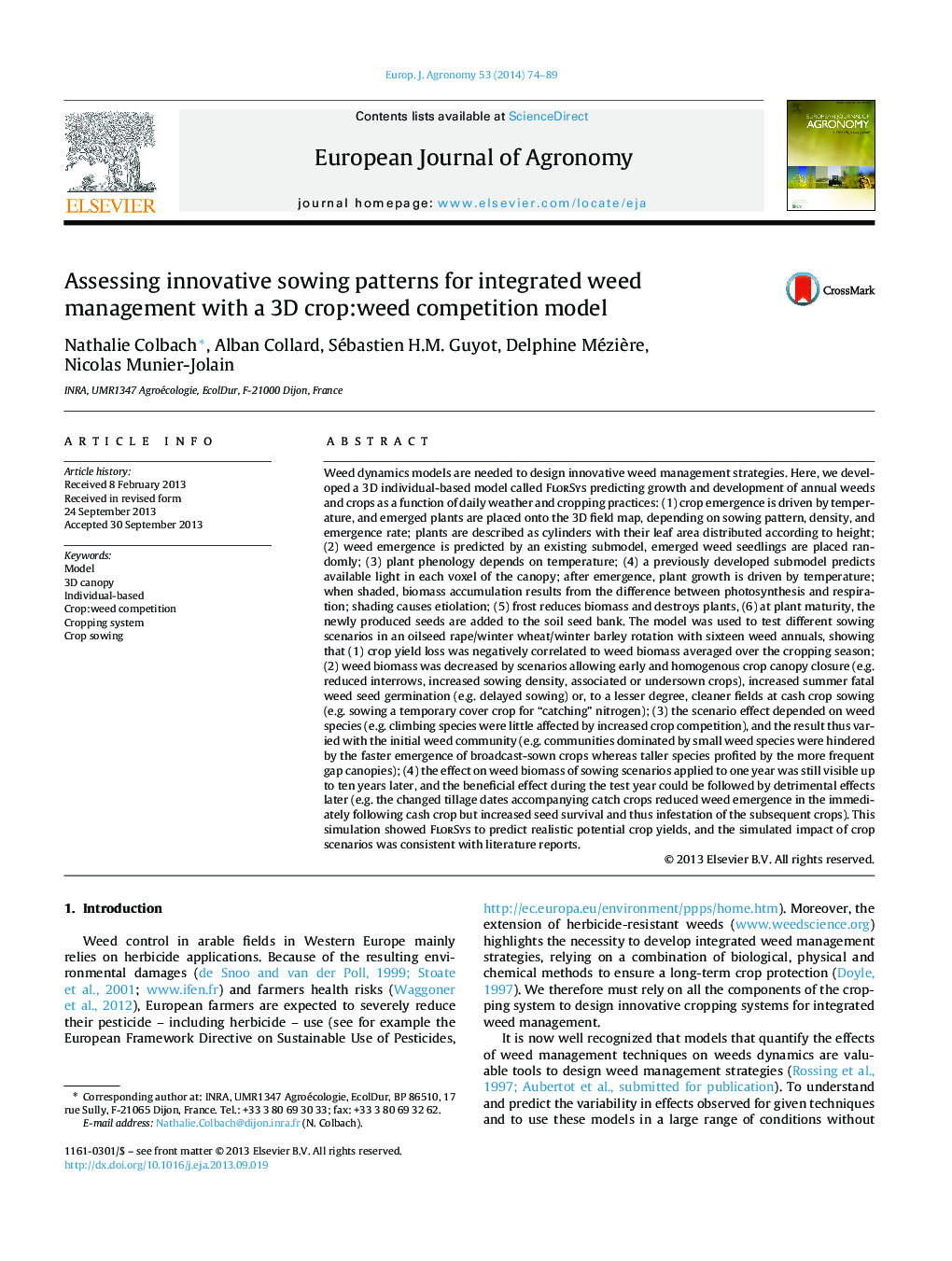| کد مقاله | کد نشریه | سال انتشار | مقاله انگلیسی | نسخه تمام متن |
|---|---|---|---|---|
| 4508995 | 1624472 | 2014 | 16 صفحه PDF | دانلود رایگان |

• FlorSys is multi-specific weed dynamics model for designing cropping systems.
• We developed a 3D individual-based crop:weed competition model for FlorSys.
• The effect of sowing scenarios on yield potential and weeds was simulated.
• Scenarios affected weeds during the test year and up to 10 years later.
• Combining different techniques over the years is necessary to reduce herbicide use.
Weed dynamics models are needed to design innovative weed management strategies. Here, we developed a 3D individual-based model called FlorSys predicting growth and development of annual weeds and crops as a function of daily weather and cropping practices: (1) crop emergence is driven by temperature, and emerged plants are placed onto the 3D field map, depending on sowing pattern, density, and emergence rate; plants are described as cylinders with their leaf area distributed according to height; (2) weed emergence is predicted by an existing submodel, emerged weed seedlings are placed randomly; (3) plant phenology depends on temperature; (4) a previously developed submodel predicts available light in each voxel of the canopy; after emergence, plant growth is driven by temperature; when shaded, biomass accumulation results from the difference between photosynthesis and respiration; shading causes etiolation; (5) frost reduces biomass and destroys plants, (6) at plant maturity, the newly produced seeds are added to the soil seed bank. The model was used to test different sowing scenarios in an oilseed rape/winter wheat/winter barley rotation with sixteen weed annuals, showing that (1) crop yield loss was negatively correlated to weed biomass averaged over the cropping season; (2) weed biomass was decreased by scenarios allowing early and homogenous crop canopy closure (e.g. reduced interrows, increased sowing density, associated or undersown crops), increased summer fatal weed seed germination (e.g. delayed sowing) or, to a lesser degree, cleaner fields at cash crop sowing (e.g. sowing a temporary cover crop for “catching” nitrogen); (3) the scenario effect depended on weed species (e.g. climbing species were little affected by increased crop competition), and the result thus varied with the initial weed community (e.g. communities dominated by small weed species were hindered by the faster emergence of broadcast-sown crops whereas taller species profited by the more frequent gap canopies); (4) the effect on weed biomass of sowing scenarios applied to one year was still visible up to ten years later, and the beneficial effect during the test year could be followed by detrimental effects later (e.g. the changed tillage dates accompanying catch crops reduced weed emergence in the immediately following cash crop but increased seed survival and thus infestation of the subsequent crops). This simulation showed FlorSys to predict realistic potential crop yields, and the simulated impact of crop scenarios was consistent with literature reports.
Figure optionsDownload as PowerPoint slide
Journal: European Journal of Agronomy - Volume 53, February 2014, Pages 74–89